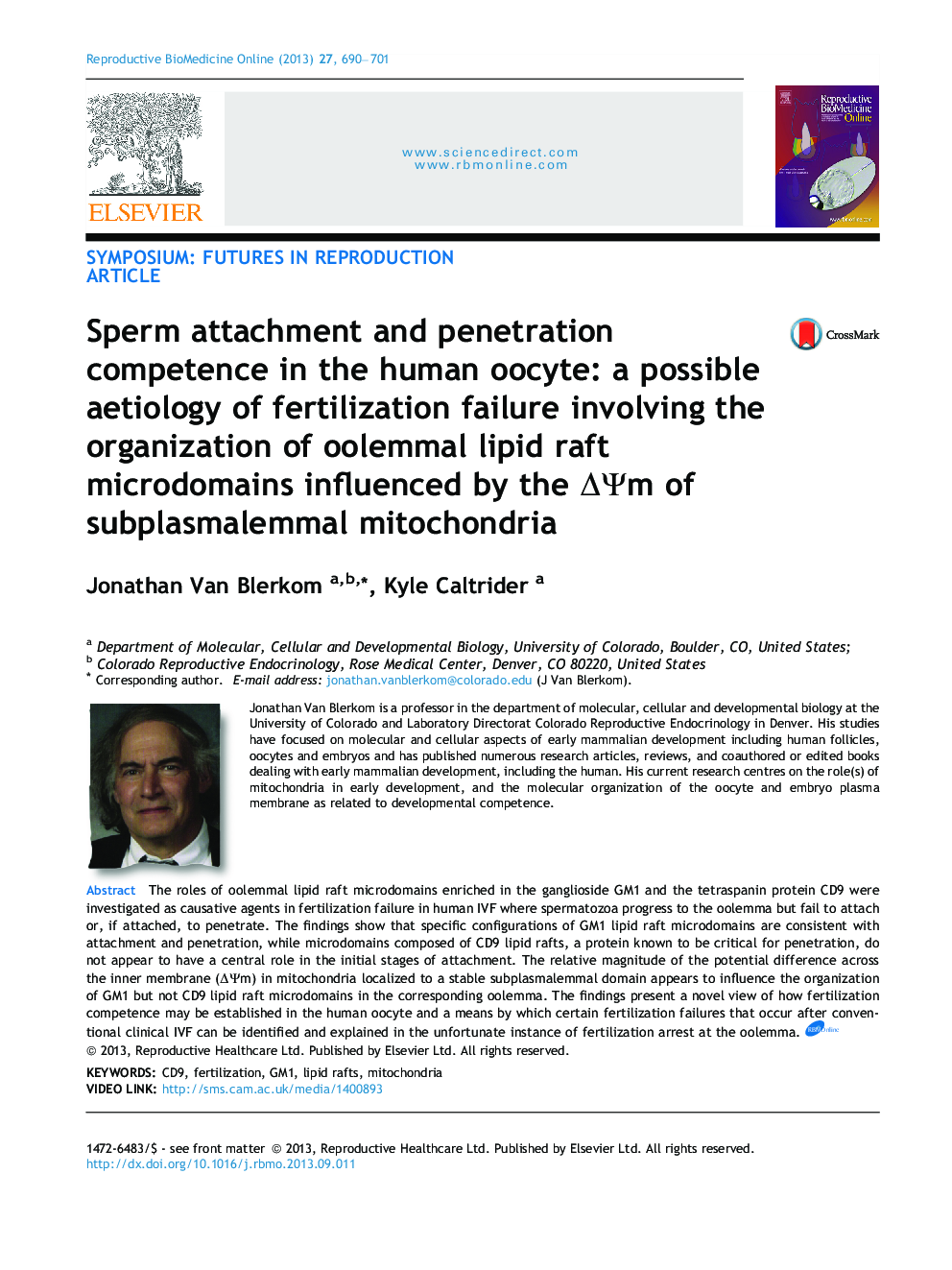| کد مقاله | کد نشریه | سال انتشار | مقاله انگلیسی | نسخه تمام متن |
|---|---|---|---|---|
| 3970224 | 1256710 | 2013 | 12 صفحه PDF | دانلود رایگان |

The roles of oolemmal lipid raft microdomains enriched in the ganglioside GM1 and the tetraspanin protein CD9 were investigated as causative agents in fertilization failure in human IVF where spermatozoa progress to the oolemma but fail to attach or, if attached, to penetrate. The findings show that specific configurations of GM1 lipid raft microdomains are consistent with attachment and penetration, while microdomains composed of CD9 lipid rafts, a protein known to be critical for penetration, do not appear to have a central role in the initial stages of attachment. The relative magnitude of the potential difference across the inner membrane (ΔΨm) in mitochondria localized to a stable subplasmalemmal domain appears to influence the organization of GM1 but not CD9 lipid raft microdomains in the corresponding oolemma. The findings present a novel view of how fertilization competence may be established in the human oocyte and a means by which certain fertilization failures that occur after conventional clinical IVF can be identified and explained in the unfortunate instance of fertilization arrest at the oolemma.This study investigated the role of the human oocyte plasma membrane (oolemma) in a type of fertilization failure that occurs after conventional IVF where a sperm reaches the oolemma but fails to attach or, if attached, penetrate the cytoplasm. We examined whether differences in the organization of certain molecular microdomains in the oolemma that likely interact with sperm correlated with fertilizability after IVF. The results show that certain microdomain configurations are consistent with fertilization, others permissive for attachment but not penetration, and still others inconsistent with attachment. When carefully examined microscopically, a sperm head was present on the oolemma in ∼35% of normal-appearing but unfertilized oocytes. This suggests a type of fertilization defect that may be both common and, possibly, a cause of ‘unexplained’ infertility in women. While the analytical methods used are presently not clinically applicable to characterize the molecular architecture of the oolemma prior to insemination, use in instances of fertilization failure after IVF may be beneficial with respect to the identification of a cause.VIDEO LINK: http://sms.cam.ac.uk/media/1400893
Journal: Reproductive BioMedicine Online - Volume 27, Issue 6, December 2013, Pages 690–701